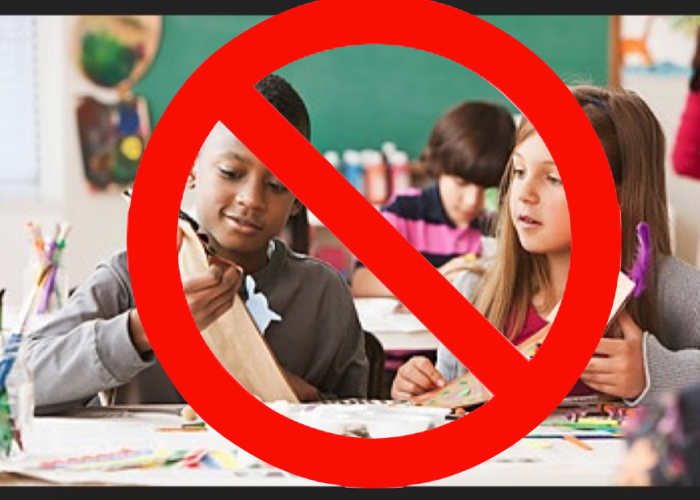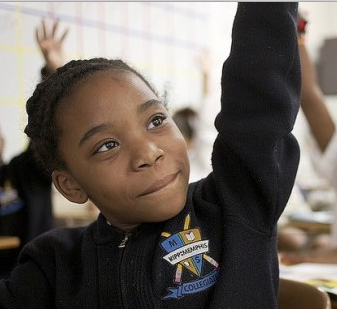
School is where you learn to learn.
And, if she’s good, she imparts that lesson to you as well.
Imagine if we took that away.
Imagine a world where there are no schools – just free range children plopped in front of a computer or an iPad and told to go learn something.
No schools, no teachers, just gangs of students walking the streets, stopping along the way to thumb messages to each other on social media, play a video game or take an on-line test.
That’s the world many EdTech entrepreneurs are trying to build.
And school vouchers are helping them do it.
Take Education Savings Accounts (ESAs) and other market based privatization schemes.
Normally, the federal, state and local government collect taxes to fund an individual child’s education, which is then spent at a public or charter school.
At a public school all that money must be spent on the student. At a charter school some of that money can be pocketed as profit by the private company who runs the school.
Public schools provide a better alternative because the funding must be dedicated to the student, living within a district’s coverage area guarantees enrollment, the school must be managed by an elected school board with open meetings and a plethora of other amenities you won’t find at a privatized institution. But at least the charter school is a school!
However, an ESA or other voucher would allow that money to go elsewhere. It could go to funding the tuition at a private or parochial school where organizers can use it however they like – pocketing some and using the rest to help the child as you’ll find in most charter schools.
But as bad as that is, vulture capitalists want to add another destination for that money – let it pile up in the bank where it can be used for discrete education services provided by the EdTech industry.
It’s almost like homeschooling – without the loving parent being in charge.
It goes by many names – a learning ecosystem, personalized learning, competency based or individualized education.
But it’s really a single person cyber school with little to no guiding principles, management or oversight.
Education is reduced to a series of badges students can earn by completing certain tasks.
Reading a book or an article gives you a badge. Answering a series of multiple-choice questions on a reading earns you more badges. And if you’ve completed a certain task satisfactorily, you can even earn a badge by teaching that same material to others.
It’s the low wage gig economy applied to education. We just transform a crappy job market where workers bounce from a few hours of minimum wage labor here to a few hours of minimum wage toil there – all without benefits or union protections – into learning. Children bouncing from a few hours of Khan Academy videos here to a software package there and Voila! “Modern” education!
In short, it’s school without the school or teachers.
And make no mistake, it’s not about improving the quality of education. It’s about providing the cheapest possible alternative and selling it to rubes as innovation.
The wealthy will still get institutions of learning. They will still be educated by the most qualified teachers in the world. They will still learn how to learn.
The best path to becoming a truly educated person involves human interaction and mentorship. You need experienced professional educators who use the empirical evidence they see in the classroom about your child to tailor lessons to their needs. The wealthy would never dream of making their children learn from the academic equivalent of an automated check out aisle or telemarketer robocall.
It is only the poor and middle class who will be released like chickens into the pasture of a learning ecosystem.
And as an added benefit, the badge structure creates a market where investors can bet and profit off of who gains badges and to what degree on the model of crypto-currencies like Bitcoin! So all the stability of the pre-crash housing market! What could possibly go wrong!?
Let me be clear – this is the ultimate goal of the school privatization movement.
Charter and voucher schools are only the tip of the iceberg. They still require real human beings to act as teachers (though they need not be as well educated or have as much experience as public school teachers). They still require buildings and grounds.
But this depersonalized learning approach allows them to do away with all of that. They can just provide students with an Internet accessible device and some dubious on-line tracking and management system.
Then they can pocket all the rest of the money taxpayers put aside to educate children and call it profit.
And they can use the programs students access to “learn” as a way to gather valuable marketing data about our kids. Everything students do on the device is free market research – every word they input, every keystroke, every site visited down to the slightest eye movement.
This is the logical conclusion of the monetization of education and an economy that only sees value in others as human capital that can be bought, sold and exploited.
This is where the privatization movement is going. And they’re laying the groundwork in legislation being proposed in our state capitals today.
In Pennsylvania, for instance, Senate Bill 2 proposes the creation of just such ESAs. If approved, the immediate result would be to boost private and parochial schools.
However, given a few years to strengthen the technologies and systems needed for a full learning ecosystem, the same law would allow taxpayer money to be used in this way.
And it’s something hardly anyone is talking about.
We’re fighting the privatization systems of today as the plutocrats set up the privatization systems of tomorrow.
Even if school vouchers never take off to the degree necessary to scaffold the most robust learning ecosystems, EdTech lobbyists are trying to install as much of this garbage as they can into our existing schools.
They are using one-to-one iPad initiatives and grants to fund up-to-date computers, Wi-Fi networks and software packages to pave the way for this brave new world of digital exploitation. They are selling our test score obsessed bureaucrats software like iStation and IXL that bridge the gap between test prep and learning ecosystems lite.
You can walk into many schools today where students spend hours on-line earning digital badges for watching videos and taking stealth assessments.
Few people are sounding the alarm because few people understand what’s going on.
This is not conjecture. This is not a conspiracy theory. This is the goal the edtech entrepreneurs will gladly tell you all about hoping you’ll invest.
There are hours of videos, pages of documents, mountains of graphs, charts and graphics about how this scheme will pay off for investment bankers and venture capitalists. (See below)
The only true way to win this battle is a cultural shift away from dehumanizing runaway capitalism.
We need to stop thinking that the private sector is always better than the public good. We need to stop allowing big business and corporations to get away without paying their fair share. We need to increase the voice of citizens and decrease the megaphone of money and privilege.
Otherwise, the science fiction dystopias of books like “Ready Player One” will no longer be fiction.
They will become the reality for every school child in this country.
A reality where school, itself, is a thing of the past.
And education is reduced to the mercenary collection of discrete skills that add up to nothing of value for the students except their own enslavement.
But don’t take my word for it. Here is the learning ecosystems model from the EdTech industry, itself, in corporate officers own words and graphics:
LEARNING IS EARNING – the scariest 6:58 video you’ll ever see.
KNOWLEDGEWORKS Vision for the Future of Education:

More on KnowledgeWorks
Listing for PARENTS AS CONSUMERS Symposium
FIGHT BACK AGAINST SCHOOL PRIVATIZATION AND RUNAWAY EDTECH:
Like this post? I’ve written a book, “Gadfly on the Wall: A Public School Teacher Speaks Out on Racism and Reform,” now available from Garn Press. Ten percent of the proceeds go to the Badass Teachers Association. Check it out!
WANT A SIGNED COPY?
Click here to order one directly from me to your door!













